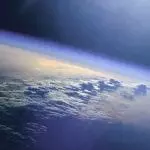Astrophotography, the photography of that which is in space, can be very complex, involving multiple optics and devices. On top of that, it is an art, requiring tracking, computer processing, and lots of time.
Here are a few common problems that we often run into:
The grainy specks that are seen in many low-light photos, known as noise, becomes an issue in long-exposure photography, and the heating of the camera sensor is a common problem.
One practical solution is to image on a very cold night. Another more sophisticated option is to use devices such as a Peltier cooler to keep the sensor temperature to a minimum.
Another often-used technique is to employ a process called “stacking.” Through stacking, we can take multiple shorter exposures of the same object, and stack them on top of each other, using computer algorithms that allow the dark areas of space to remain dark, while bringing out the detail and brightness of faint galaxies or nebulae.
This requires either perfect tracking of the stars, or a preliminary alignment step that rotates and matches each photograph to the next.
The art of astrophotography allows me to share with you each week the wonders of God’s Universe.
I’m David Rives…
Truly, The Heavens Declare the Glory of God.
LIKE David’s FB page here: http://www.facebook.com/DavidRivesMinistries
FOLLOW us on Twitter: http://twitter.com/TheDavidRives
VISIT our official website for tons of free information: http://www.davidrivesministries.org
David Rives MUSIC: http://www.davidrivesmusic.com
For the TBN show “Creation in the 21st Century”: http://www.creationinthe21stcentury.com





